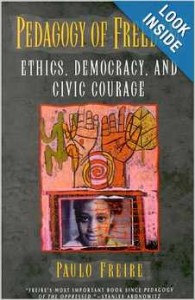
Five for Synthesis & Explanation, March 2, 2008
Clay Shirky
I was modestly disappointed to see so few references to pioneers I recognize, including Stewart Brand, Kevin Kelly, Joe Trippi, and so on. Howard Rheingold and Yochai Benkler get single references. Seeing Stewart Brand's recommendation persuaded me I don't know the author well enough, and should err on the side of his being a genuine original.
Certainly the book reads well, and for someone like me who reads a great deal, I found myself recognizing thoughts explored by others, but also impressed by the synthesis and the clarity.
A few of my fly-leaf notes:
+ New technologies enable new kinds of groups to form.
+ “Message” is key, what Eric Raymond calls “plausible promise.”
+ Can now harness “free and ready participation in a large distributed group with a variety of skills.”
+ Cost-benefit of large “unsupervised” endeavors is off the charts.
+ From sharing to cooperation to collective action
+ Collective action requires shared vision
+ Literacy led to mass amatuerism, and I have note to myself, the cell phone can lead to mass on demand education “one cell call at a time”
+ Transactions costs dramatically lowered.
+ Revolution happens when it cannot be contained by status quo institutions
+ Good account of Wikipedia
+ Light discussion of social capital, Yochai Bnekler does it much better
+ Value of mass diversity
+ Implications of Linux for capitalism
+ Excellent account of how Perl beat out C++
Bottom line in this book: “Open Source teaches us that the communal can be at least as durable as the commercial.
Other books I recommend:
Out of Control: The New Biology of Machines, Social Systems, & the Economic World
Tools for Thought: The History and Future of Mind-Expanding Technology
The Virtual Community: Homesteading on the Electronic Frontier
Smart Mobs: The Next Social Revolution
The Revolution Will Not Be Televised : Democracy, the Internet, and the Overthrow of Everything
The Wealth of Networks: How Social Production Transforms Markets and Freedom
Wikinomics: How Mass Collaboration Changes Everything
Group Genius: The Creative Power of Collaboration
Blessed Unrest: How the Largest Movement in the World Came into Being and Why No One Saw It Coming
Collective Intelligence: Creating a Prosperous World at Peace
There is of course also a broad literature on complexity, collapse, resilience, diversity, integral consciousness and so on.





